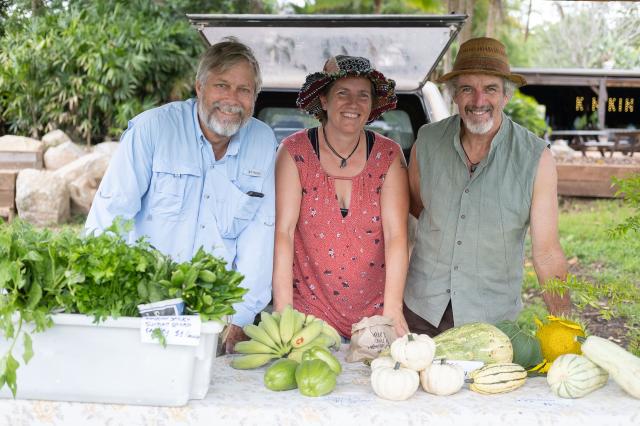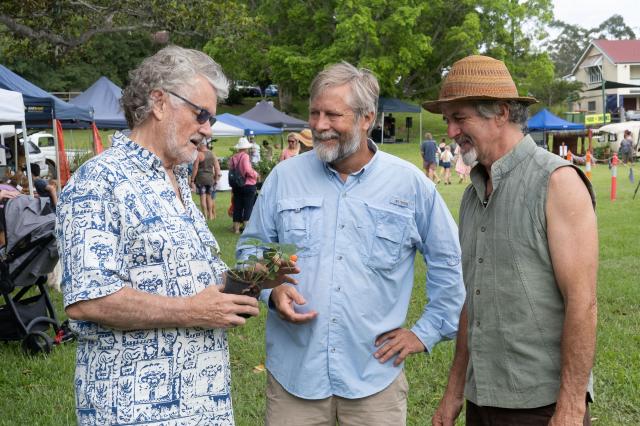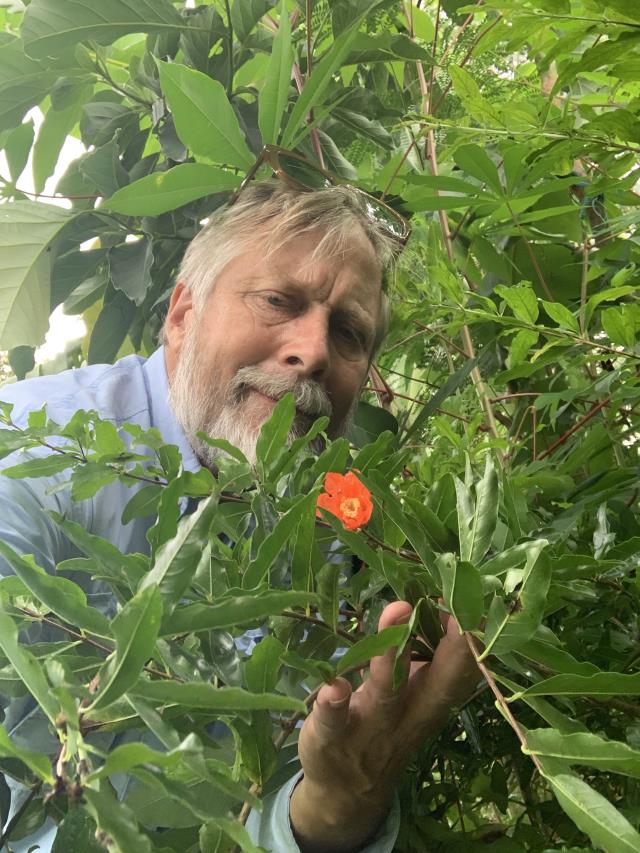By Phil Jarratt
Councillor Tom Wegener has been a dreamer all of his life, but sometimes he dreams so big that he can barely contain himself.
For the past 18 months he’s been dreaming big about turnips and men in white coats, and Olympic athletes and coaches in restaurants demanding only Noosa produce.
To take the last first: “I look 10 years into the future and I see an Olympic athlete in Brisbane ordering a salad in a restaurant, and his coach jumps in and asks the waiter, ‘Is this Noosa-grade produce?’ And of course the waiter says, ‘Yes, sir. Nothing but the best here’. That’s what is going to happen if we work hard and work smart now.”
In addition to his responsibilities as a councillor, Tom is Noosa Council representative and a board member of the Noosa Biosphere Reserve Foundation, and the recently-elected president of Permaculture Noosa. He is using all of these agencies to drive this vision he has for a Noosa “agri-hub”, a consortium of stakeholders that will foster and facilitate a regeneration of sustainable, resilient farming in the shire.
Yes, it’s a big idea, and we’ll get to it in a moment, but first, just so you won’t die wondering, those men and white coats and their turnips.
Tom: “We’ve got 10 years to get Noosa producing the best and healthiest food in the world. And through the NBRF, we can actually prove that. We can have men in white coats pulling up turnips and going, yep, this is the healthiest turnip in the world because this mound of earth I’ve just pulled it from has been maturing for 10 years the way it should.”
Tom says he’s been banging on about this for the 18 months or so that he’s been a councillor, but the Olympics announcement has certainly seen him ratchet up.
He says: “Funny story – we were all down at the Future Sunshine Coast conference the other day, watching Ted O’Brien (Fairfax MP and Special Envoy for the Olympics) on the screen saying, ‘I want us to be known the world over as the healthiest place on earth.’ Mayor Stewart was sitting next to me and she nudges me and goes, ‘He stole that from you!’”
The idea of Noosa as a hub of high quality, healthy and sustainable food is by no means new. In fact, it predates the shire itself, going back to pioneer Walter Hay’s extensive market garden on what is now Noosa Sound which fed the few families that lived in Noosa Heads at the start of the 20th century, and the slightly greater number of intrepid tourists who stayed at Hay’s Bay View and Laguna House.
It got another shot in the arm after World War I when family unit dairying led to the formation of co-ops and effective distribution, and when a black cloud formed over the Tweed Shire in NSW because its banana crop was wiped out by bunchy top disease and the new Noosa Shire found the silver lining and became (briefly) Australia’s leading banana producer. By the end of the 1920s, Noosa was developing a reputation as an experimental food bowl.
In more recent times, this writer and his wife joined forces in the early 1990s with foodie businessfolk Helen and Tony Flanagan to found a company called Great Gourmet Adventures which helped promote the quality of local produce by bussing tourists around to meet the growers and eat their crops on site. The farmers’ markets and food and wine festivals that followed this century took the perception of Noosa as a quality food capital much further, but Tom Wegener believes that in the wake of drought and climate change and two years of Covid, sustainable farming is in trouble.
“It’s a long story, but basically the past mantra was go big or get out of farming. Mono-cropping, mechanisation and chemical fertilisers were the farming standard.
“In Noosa, small farms could not compete in the modern model, and since then, many farming lands, including hobby farms, have become idle and degraded. But, now things have started to change. Farming practices are becoming more focused on micro, intensive farming where crops and animals work in harmony to produce abundance, and regenerate the land. Noosa residents are seeking out locally grown food knowing it is organic, healthy and supports the local community,” Tom says..
“The foundations are now being laid for a rebirth of local farming. But there are substantial obstacles. The first is that small local farming, with current organisations, is not financially viable. Noosa land is very expensive, and along with the costs of machinery, labour, fertilisers and advice, it’s uneconomic.
“On top of this, the land in many cases has been degraded, and climate change poses greater uncertainty.”
While Tom’s ideas on creating a local farming renaissance bubbled away, Noosa Council was in the final stages of debating its Climate Change Response Plan. He paid special attention to Theme 6: Sustainable agriculture and food systems, which outlines as its priorities, “Support agri-businesses and landholders to create a sustainable and regenerative food system that includes consideration and preparation for climate change risks … Promote sustainable, locally produced food and improve local food access for farmers, residents, visitors and vulnerable people”.
Bingo!
The rationale and the funding would come not from the Economic Plan but from the CCRP.
Tom got a small grant from council and started putting the pieces in place, from the ground up, as it were, with the team at Permaculture Noosa beginning the construction of a pavilion at the Cooroy Community Gardens that will have a commercial kitchen and shaded area for the development of local produce.
He says this first step was inspired by Elaine Bradley, the guru of sustainable farming at Mary Valley Country Harvest, who told him that when Covid hit a lot of elderly people in the valley didn’t want to go out to the markets to buy their food, so the farmers developed their own phone tree and delivered fresh homegrown food to those in need.
“When I heard about that I thought, there’s our response plan for all kinds of catastrophes that could disrupt food supply.”
Now that Agri-Hub is up and running as a live project of Noosa Biosphere Reserve Foundation, and supported by a long list of organisations including Noosa and District Landcare and Tourism Noosa, the greatest challenge is to get people who want to farm onto land where their small farms can be viable and sustainable.
“We want to help young farmers get land because they can’t afford it in Noosa,” Tom says.
“But the NBRF can step in and negotiate with landowners to make unused land available, and with farmers to ensure they would use the land appropriately. In each case, the NBRF would facilitate a clear contract.
“The landowner gets the land improved through the labour of the farmer, that’s his payment. I’ve spoken to landowners who seem very happy to do this. And we know who the farmers might be through a group called Young Farmers Connect. That organisation is just full of young people who have a dream to get out and make a life on the land.
“So it’s a 10-year plan to make this happen, hinged on the response to climate change, but I was wondering where the economic driver might be, and lo and behold, we get the Olympics in 2032.
“That changes everything. We’ve got 10 years to get Noosa producing the best and healthiest food in the world, and we can do it if we start now.”
Anyone seeking more information or an involvement in the Agri-Hub project should contact Cr Tom Wegener at tom.wegener@noosa.qld.gov.au








